Look Before You Sit: At Frieze New York, the Seats Are All Sculptures
Frieze New York opens its doors to the public today, but already during yesterday's press and VIP preview the aisles were crowded, the common areas and restaurants filled with worn-out fairgoers, and it seemed as if the only empty seats were sculptures.
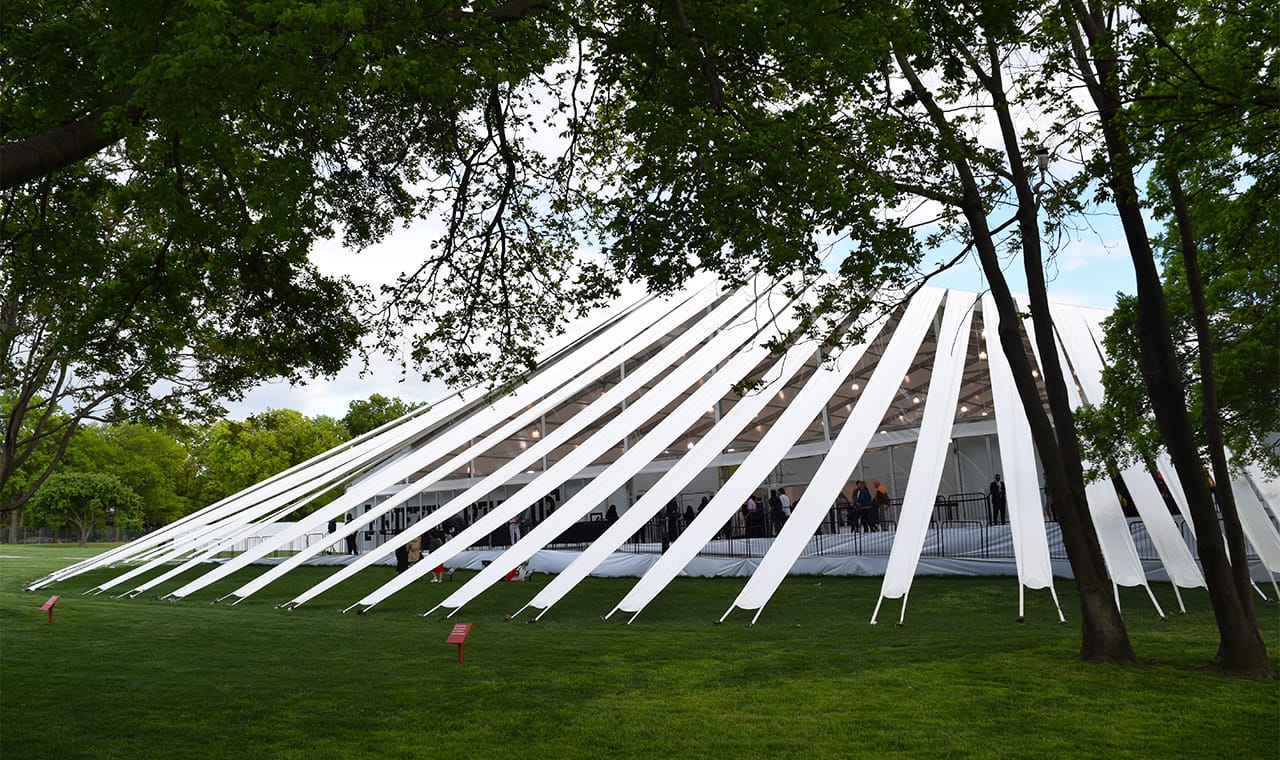
Frieze New York opens its doors to the public today, but already during yesterday’s press and VIP preview the aisles were crowded, the common areas and restaurants filled with worn-out fairgoers, and it seemed as if the only empty seats were sculptures. It’s not news that galleries bring their top chair game to art fairs, but at Frieze they’ve gone a step further and brought an incredible number of sculptures and installations involving chairs, benches, stools, recliners, and couches.
There are impossibly hard and heavy seats made of stone. New York gallery Salon 94 has a selection of stools in red and white marble by the Swiss design duo Kueng Caputo (Sarah Kueng and Lovis Caputo). And at least three galleries — including Skarstedt, Sprüth Magers, and Cheim and Read — are showing inscribed marble benches by Jenny Holzer.


The lion’s share of Frieze’s seat sculptures look precarious and uncomfortable — for a broad range of reasons. The awkward scenario evoked by the title of Ryan Gander‘s hyperrealist wooden sculpture “The way things collide (Toyota Prius driver’s seat, meet used tampon)” (2014), on view in gb agency‘s booth, undermines the finely crafted cherry car seat’s practically palpable plushness.
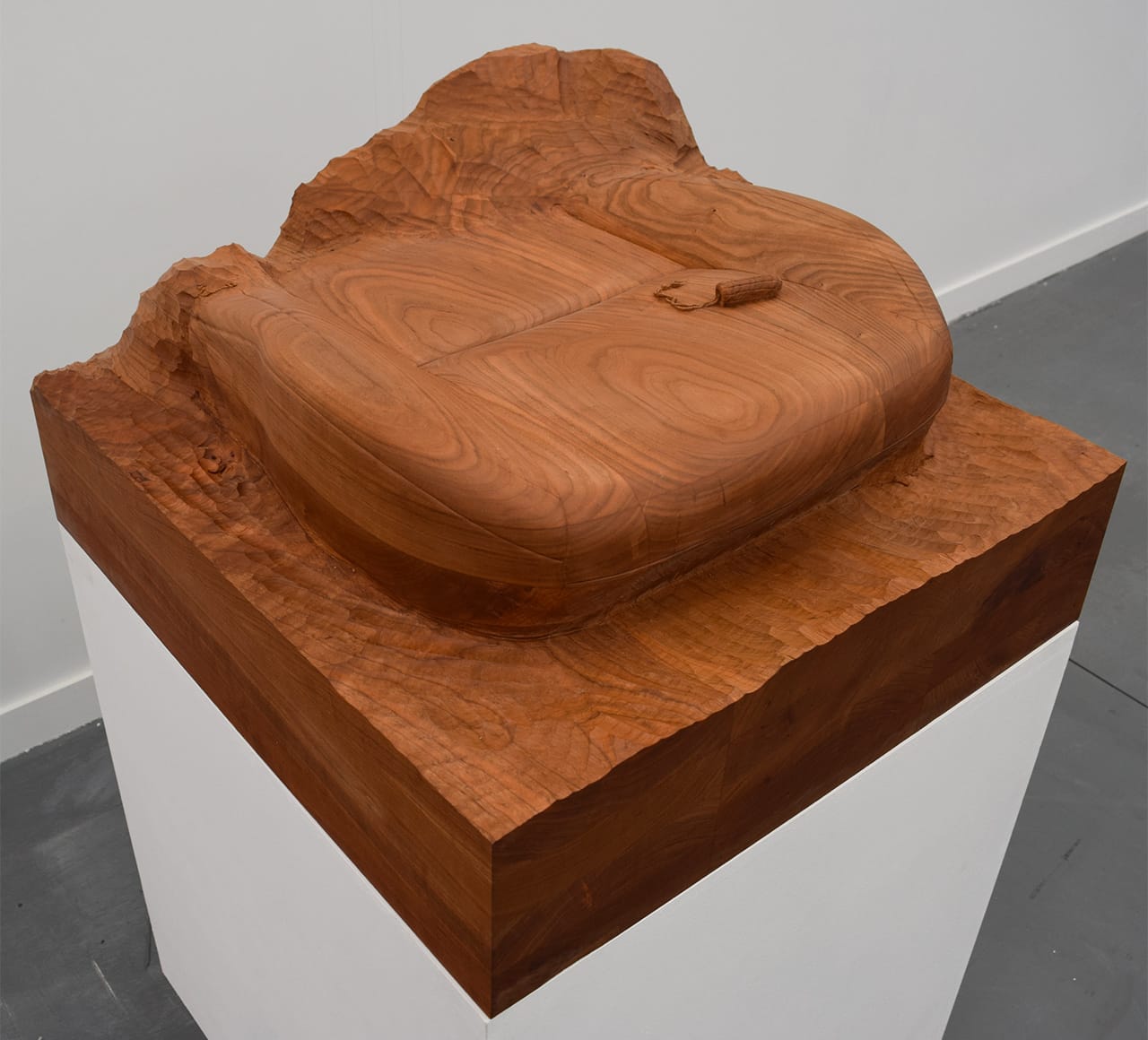
In the fair’s Frame sector devoted to solo presentations by galleries founded in the last eight years, Swiss dealer Barbara Seiler has sacrificed one of her narrow booth’s few chairs to an impromptu, site-specific intervention by Cécile B. Evans. Luckily visitors can sit on the plush rug nearby to watch Evans’s cryptic video of an uncanny Philip Seymour Hoffman avatar.
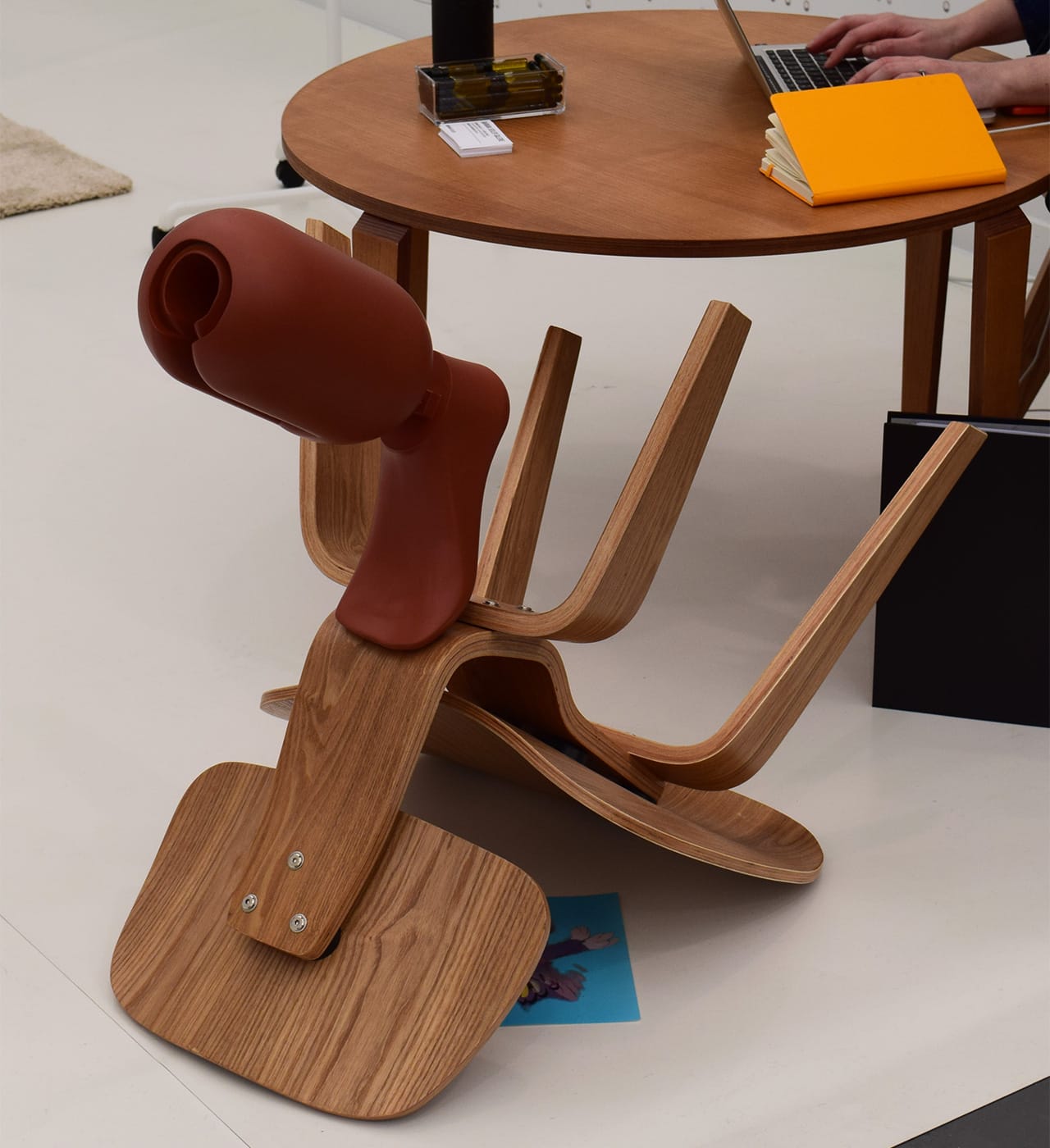
Two galleries brought bench sculptures by Jeppe Hein — who is about to grace Brooklyn Bridge Park with his playful outdoor art — and while the staff of Johann König made good use of their “Modified Social Bench #30” (2012), workers in the Galleri Nicolai Wallner booth had no such luck with “Modified Social Bench #14” (2011).
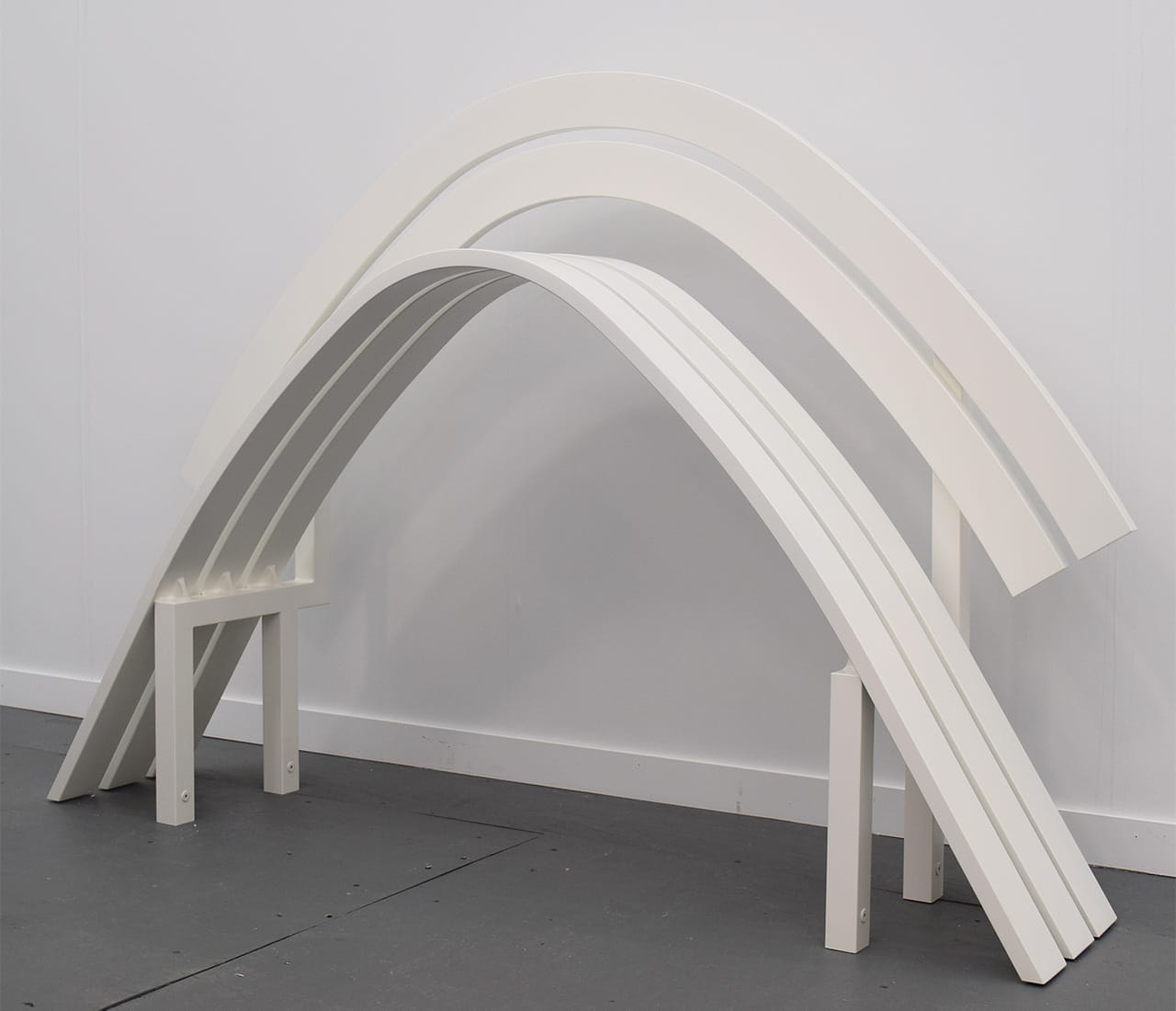
Other seat sculptures at Frieze are impractical because they are already filled. In the Mendes Wood DM booth, two Adriano Costa sculptures feature small, utilitarian folding stools stacked high with precarious, Rube Goldberg-like rigs. Warsaw’s Galeria Foksal is showing a bench by Pawel Althamer that was made from NYPD barricades and that is occupied by a reclining figure cobbled together from trash. (Trash and found-object sculpture is another of this year’s recurring trends at Frieze.) Beijing’s Long March Space, meanwhile, has a full Ming dining room set by Zhan Wang, but the table and chairs have large stainless steel stones lodged in them.


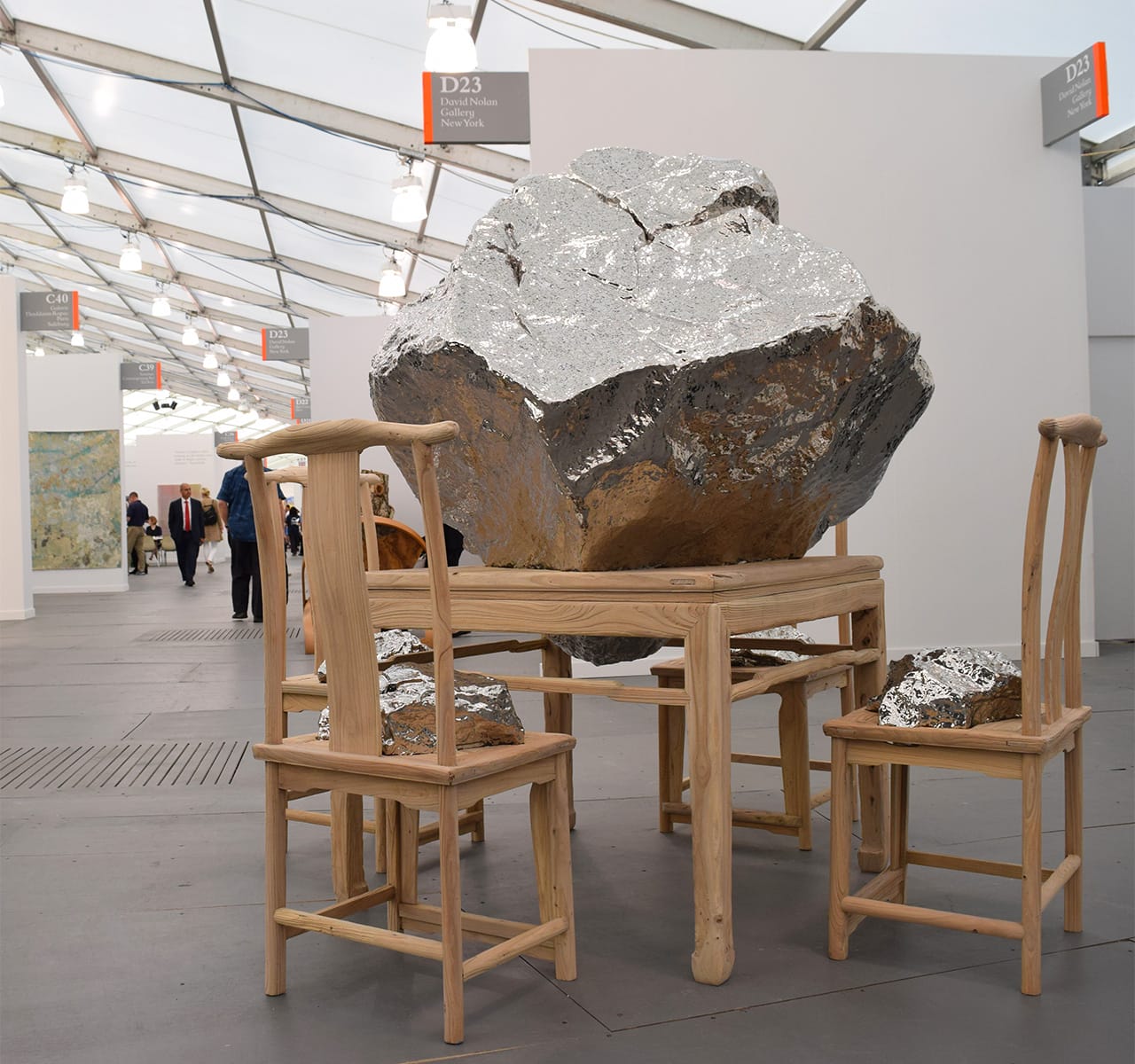
In the booth of London gallery Sadie Coles — which also boasts some wood-and-concrete seats by Sarah Lucas for the gallery staff — there’s an Urs Fischer sculpture that consists of a chair precariously balanced on its two back legs, with one of its front legs propped on a small Evian bottle. Whether the sculpture is intended as a commentary on the evil of the bottled water industry or the global epidemic of poor posture, it’s worth noting that the seemingly wooden chair is actually made of plaster and fiberglass.

Despite the predominance of uninviting seat sculptures, there are also a number that look quite comfortable. Chief among them is Mary Heilmann‘s “Rietveld-Remix #7” in 303 Gallery‘s booth. Visitors to the new Whitney Museum have had a chance to take this popping polychromatic sculpture’s functional metal cousins for a test sit on the institution’s fifth floor terrace. On the more monochrome and much softer side of things, Oslo’s Karma International is showing a comforter sculpture and a chair, both made of silicone, by the young French artist Mélanie Matranga. Sleek seats by household names are on view, too, in the booths of Paul Kasmin and David Nolan, who have brought chairs by Ron Arad and Richard Artschwager, respectively.
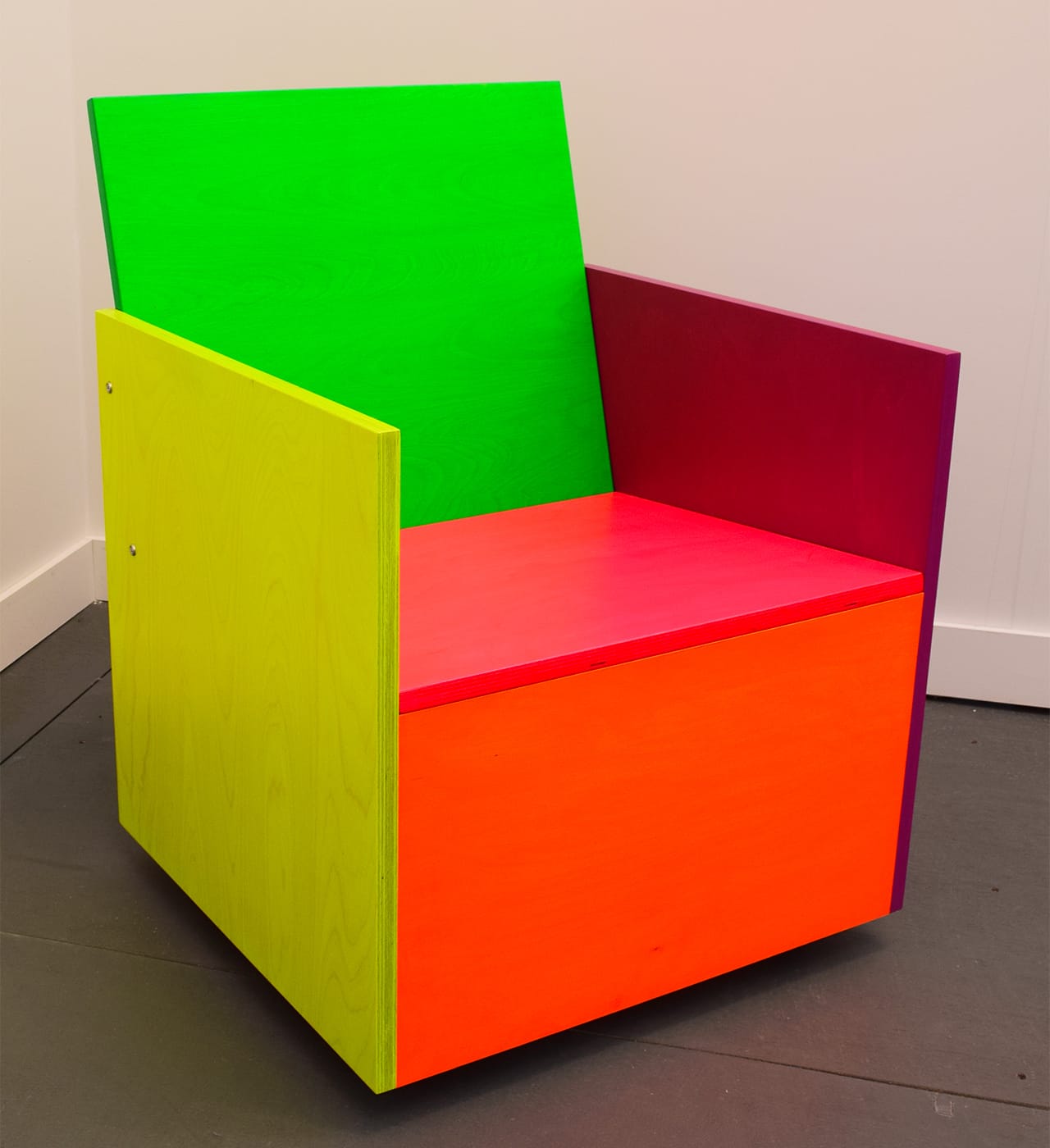

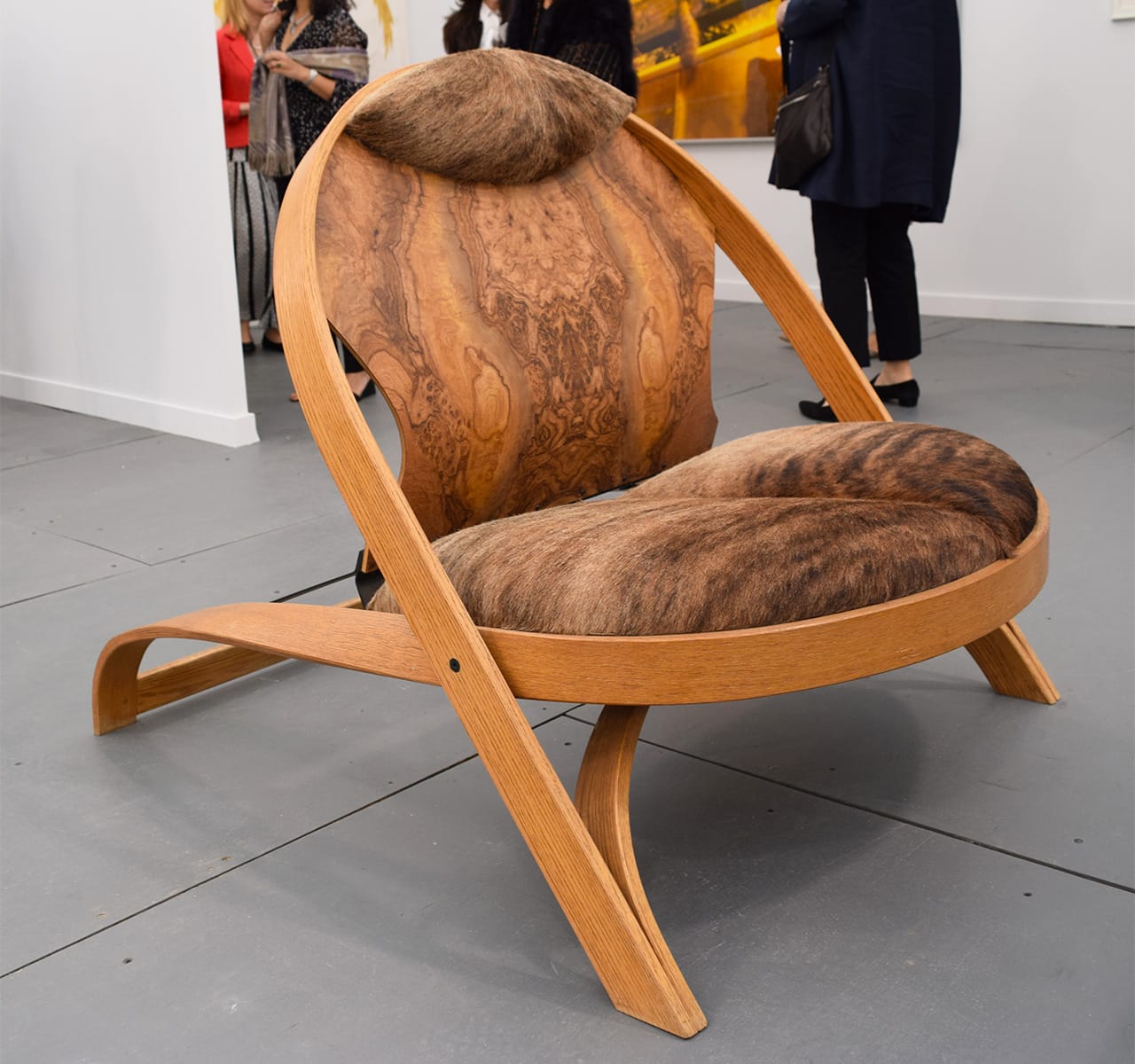

Others have taken a more irreverent approach to their would-be seats. Christopher Schank‘s pink contraption in the Almine Rech Gallery booth, “ALUfoil Chair (Pink)” (2015), looks positively space age. And Turner Prize nominee Nicole Wermers‘s “Untitled Chair” sculptures — on view in both Herald St and Tanya Bonakdar Gallery‘s booths — could have been stolen from Upper East Side gallery offices where, one suspects, fur coats are draped over modernist chairs on a daily basis.
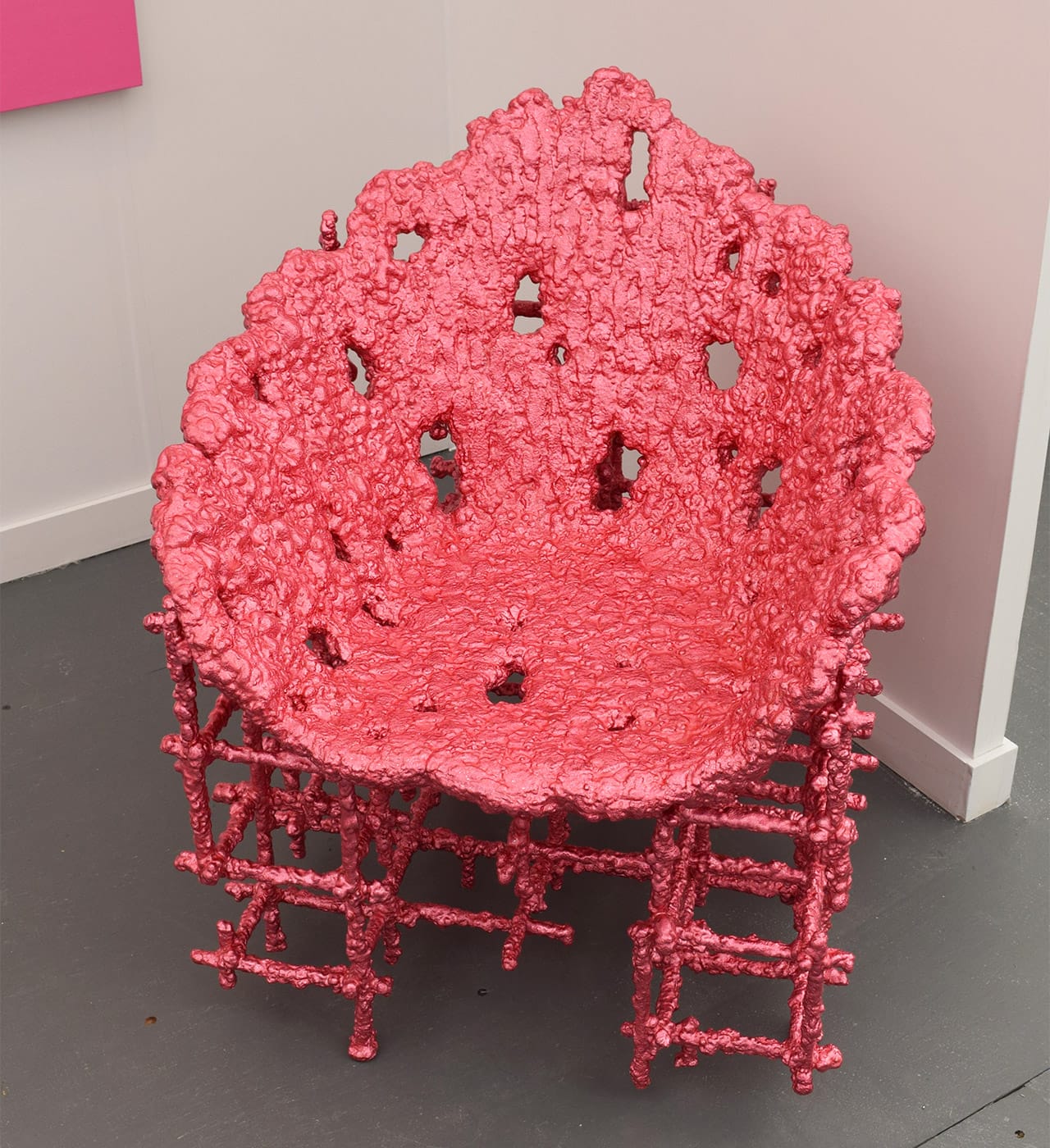
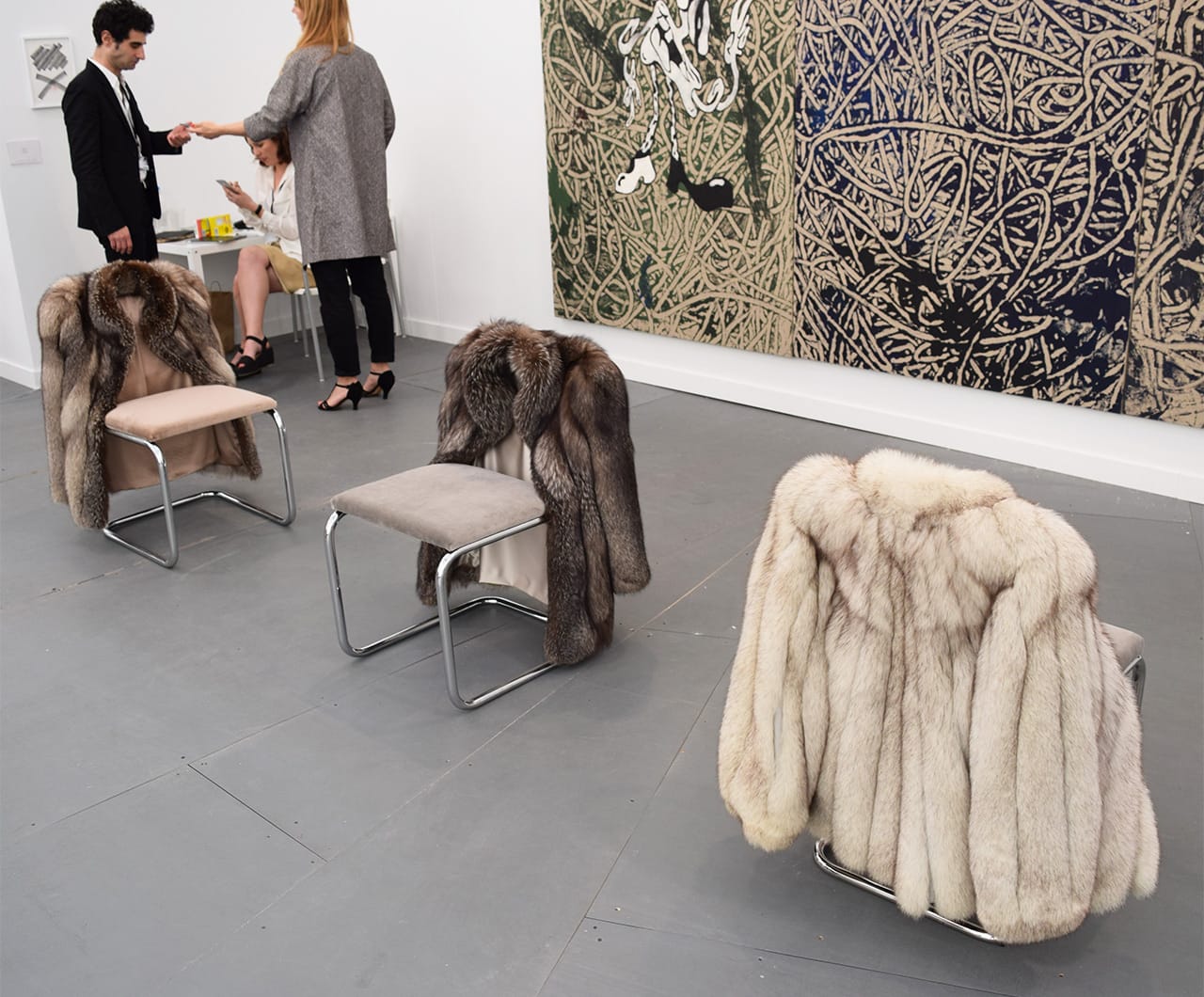
A few of Frieze’s seat sculptures are brashly maximalist. Athens gallery The Breeder has given over the bulk of its booth to a stadium-seating style installation by Andreas Angelidakis, “Crash Pad” (2015), which is punctuated with columns and books, and draped in colorful carpets. At three locations in the fair, as part of its Frieze Projects program, Thai artist Korakrit Arunanondchai has installed recliners sheathed in bleached denim atop kaleidoscopic carpets. The installations are riotously colorful, to the point of being intimidating, but by day’s end on Wednesday they were in high demand.
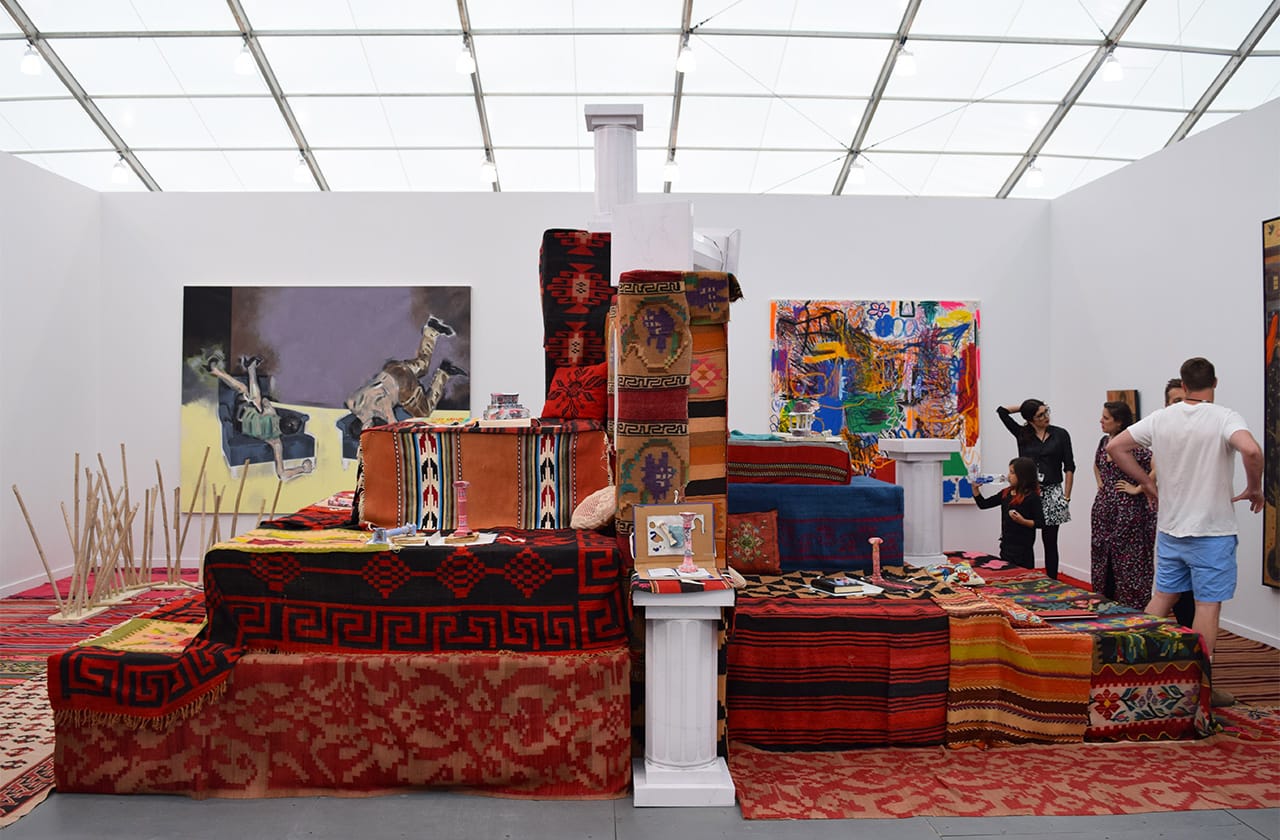

The seats-as-art trend is so prevalent at the fair that it has spilled out of the tent in the form of Samara Golden‘s Frieze Project, “Colossus” (2015). An armchair and couch, both upholstered in a garish floral pattern that Golden has supplemented with hand-painted flowers, face a cutaway in the bottom of the tent. Underneath, colorful mannequins stand, sit, and recline in a seemingly subterranean grotto, a mirror illusion similar to her incredible, M.C. Escher-esque installation currently at MoMA PS1.

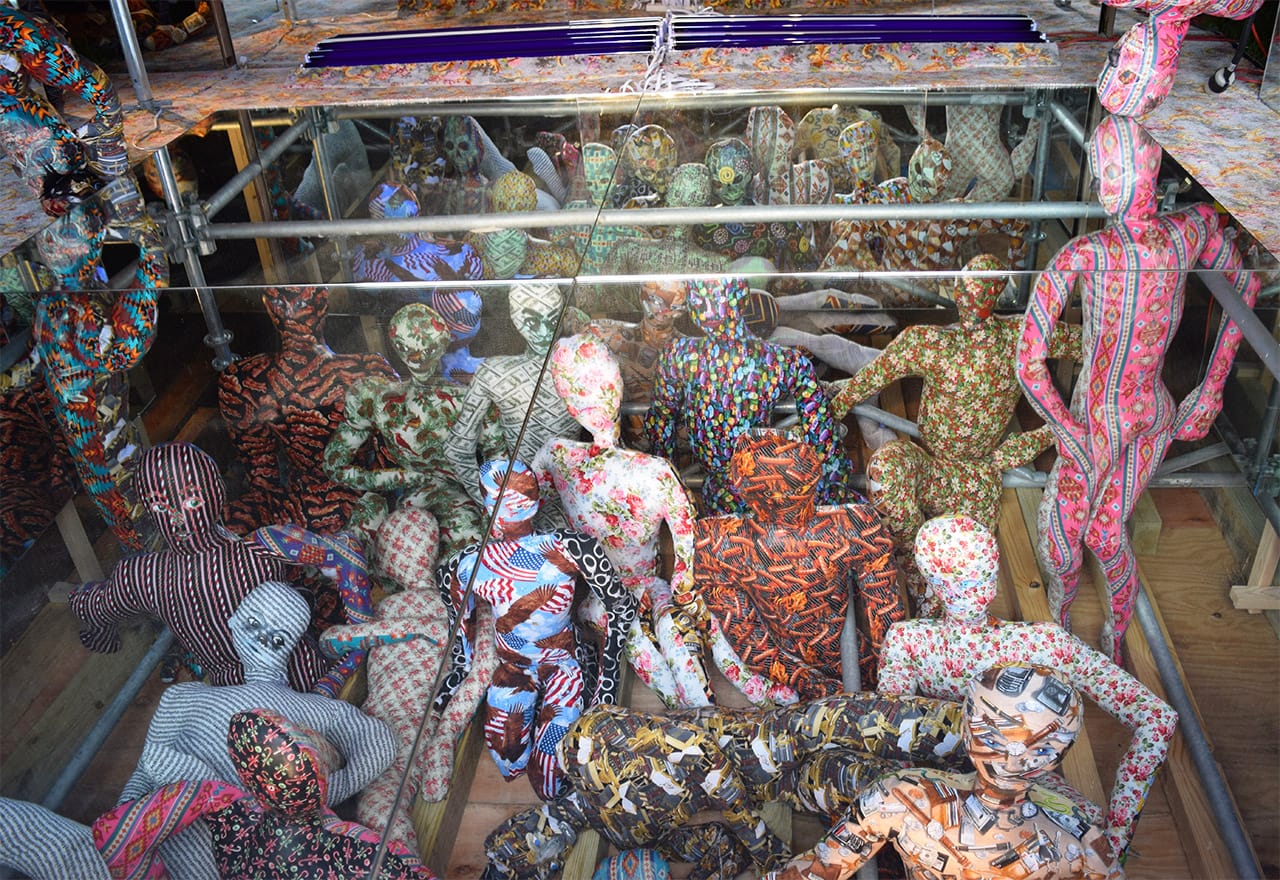
Incredibly, among all the seat sculptures, there’s only one toilet at Frieze New York, and an impractically narrow one at that — Erwin Wurm‘s “Toilett” (2014) in the Galerie Thaddaeus Ropac booth.
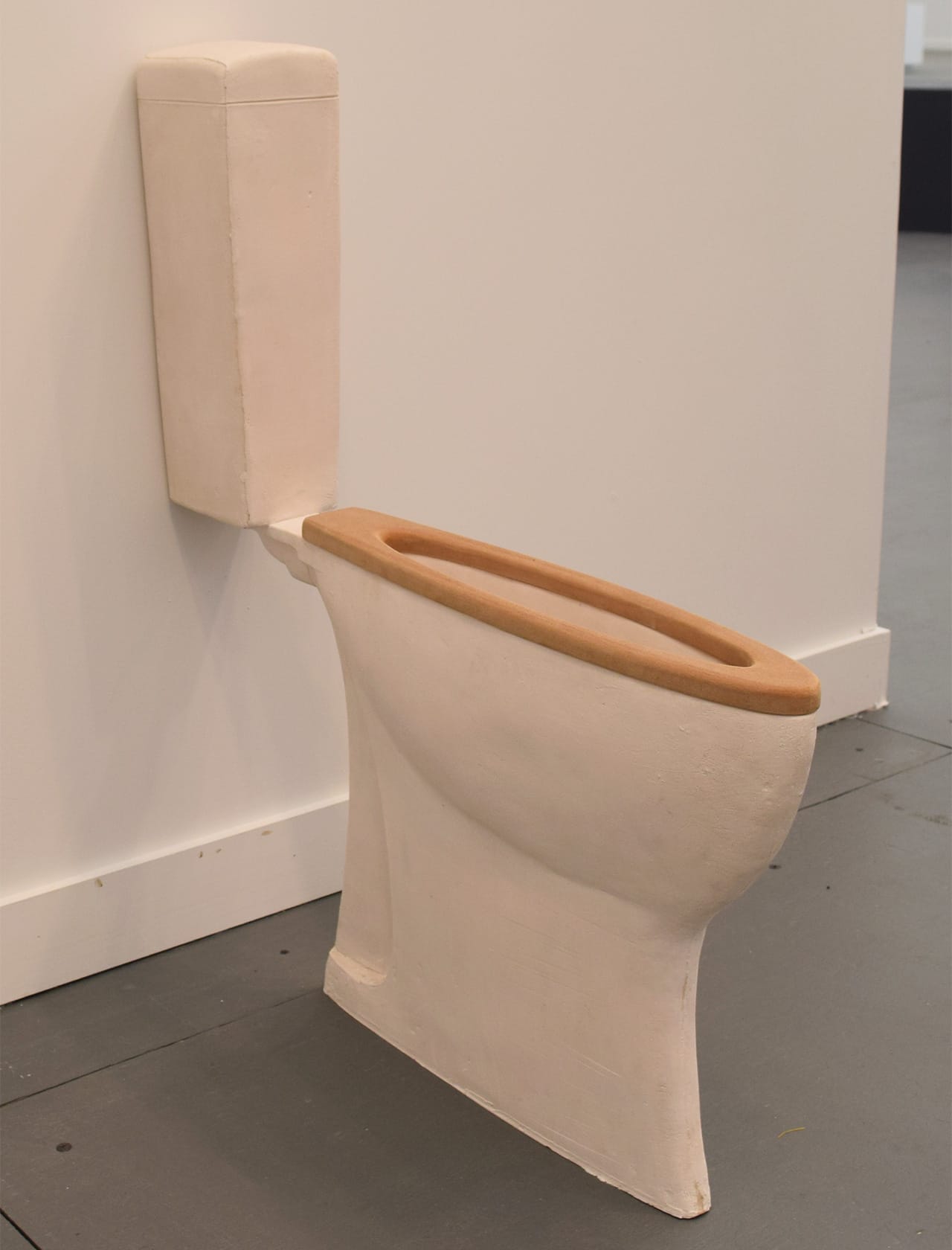
What to make of Frieze’s pervasive seats-as-sculptures trend? Is this a harbinger of a future collapse of contemporary art and furniture design into a hybrid, high-end home decoration market? I’d rather see it as the new front in the assault — begun by Modernist and Minimalist sculptors — on the notion that sculptures should be discreet objects that sit on pedestals. At Frieze, the pedestals have become seats and the seats in turn have become the sculptures. The message is clear: 2016 will be the year of rug art.
Frieze New York continues in Randall’s Island Park (Randall’s Island) through May 17.




